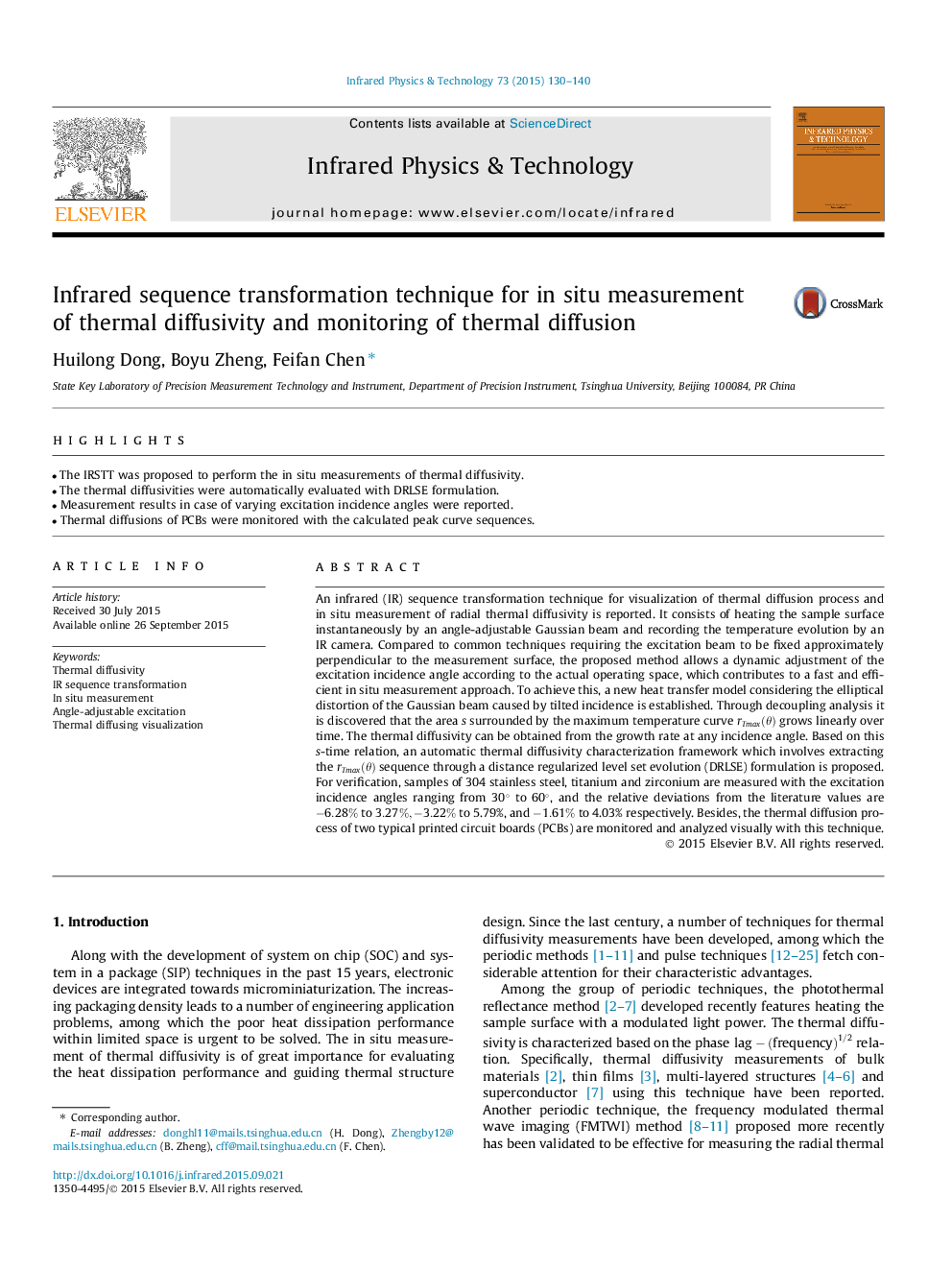| Article ID | Journal | Published Year | Pages | File Type |
|---|---|---|---|---|
| 1784087 | Infrared Physics & Technology | 2015 | 11 Pages |
Abstract
An infrared (IR) sequence transformation technique for visualization of thermal diffusion process and in situ measurement of radial thermal diffusivity is reported. It consists of heating the sample surface instantaneously by an angle-adjustable Gaussian beam and recording the temperature evolution by an IR camera. Compared to common techniques requiring the excitation beam to be fixed approximately perpendicular to the measurement surface, the proposed method allows a dynamic adjustment of the excitation incidence angle according to the actual operating space, which contributes to a fast and efficient in situ measurement approach. To achieve this, a new heat transfer model considering the elliptical distortion of the Gaussian beam caused by tilted incidence is established. Through decoupling analysis it is discovered that the area s surrounded by the maximum temperature curve rTmax(θ) grows linearly over time. The thermal diffusivity can be obtained from the growth rate at any incidence angle. Based on this s-time relation, an automatic thermal diffusivity characterization framework which involves extracting the rTmax(θ) sequence through a distance regularized level set evolution (DRLSE) formulation is proposed. For verification, samples of 304 stainless steel, titanium and zirconium are measured with the excitation incidence angles ranging from 30° to 60°, and the relative deviations from the literature values are -6.28% to 3.27%,-3.22% to 5.79%, and -1.61% to 4.03% respectively. Besides, the thermal diffusion process of two typical printed circuit boards (PCBs) are monitored and analyzed visually with this technique.
Related Topics
Physical Sciences and Engineering
Physics and Astronomy
Atomic and Molecular Physics, and Optics
Authors
Huilong Dong, Boyu Zheng, Feifan Chen,
